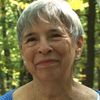More and more I hear talk about "Livable" and "Age-friendly" communities. I see these terms in newspapers, web-sites, blogs, and presentations. For many years, I have been intrigued by the ideas underlying these broad concepts. Interestingly, my very first article in the Newton TAB of April 6, 2010 was on the Meaning of Aging in Place. I quote myself:
"Aging in place well means that the community -- including formal resources such as government, service providers, churches and synagogues, along with informal groups, and networks -- is aware of and advocates for the characteristics that make up a livable community for all citizens -- including its elders. ...Newton ... is a place where there is opportunity for civic engagement, appropriate housing, good transportation, a way to meet new people and retain old friendships, a sense of safety and security, connection to the natural world, employment, intergenerational venues, and access to arts and culture."
When I wrote these words six years ago, Newton was just beginning to acknowledge that our population was aging. In 2010 and 2014 we had higher percentages of elders than the state and nation. The 2014 U.S. Census-American Community Survey shows that 21.6% of Newton residents were age 60 and over compared to 20.3% for Massachusetts, and 19.5% for the Country - all up from 2010. Certainly there are other places in the U.S. (Florida) and in the state (Cape Cod, Berkshires) with higher proportions of seniors. But we are on the leading edge of the aging curve. Projections from the UMass Donahue Institute estimate that by 2030, Newton's population age 60 and could be 31%.
This is not just a Newton or U.S. phenomenon. It is happening all over the world. In 2005, at the International Association of Gerontology and Geriatrics Conference in Rio de Janeiro, consensus emerged to address global aging. In 2007, the World Health Organization (WHO) created Global Age-friendly Cities: A Guide that offered checklists for cities to create their own age-friendly community. At the same time in the United States, AARP created its own "aging" model that they called "Livable Communities." So, here we have two terms "livable" and "age-friendly" each with a different source, but with the same underlying notion: making communities livable and friendly to people of all ages - including seniors.
In the past few years AARP has become the U.S. arm of the WHO initiative concentrating on WHO's "Eight Domains of Livability." These Domains include much of what we need for a safe, secure existence: Housing, Transportation, Communication & Information, Community Support, Civic Participation & Employment, Social Participation, Respect & Social Inclusion, and Outdoor Spaces & Buildings. I am adding Arts & Culture, and Educational Opportunities.
I state some statistics and background, but, how do these relate to Newton, and you and me? Although it may not be noticeable at times, Newton is already working on all of these domains in one or more venues. City government and local grass-roots groups are addressing our critical need for affordable and accessible Housing. The mayor's office, appointed committees, and Newton's planning department are working on Transportation and mobility, along with Outdoor Spaces & Buildings including sidewalks and traffic. The City of Newton encourages Civic Engagement through its Boards and Commissions. These are just a few examples.
Even with these efforts, there may be barriers to understanding how it all fits together, which, in turn, can lead to a sense of disconnectedness. I believe that having common, core concepts such as "livability" and "age-friendliness" with eight or more "Domains" offers a comprehensive model to show how this dedicated work connects. Such a model is inclusive, respectful and embracing. It acknowledges the terrific actions already being taken and sets a platform for future work. Down the road, it can help identify where more focus is needed. However, before we get to identifying gaps we must know what is already happening.
The Newton Council on Aging, the Newton Department of Senior Services, and city administration has begun to bring representatives of the various Domains together at COA meetings to tell what they are doing, to document the main emphasis of their activities, and to connect with others who are working on similar or related issues. The process has just started and, so far, the reactions to opportunities for open communication and sharing have been extraordinarily positive.
Although the ideas of "livability" and "age-friendly" come largely out of the global aging phenomenon, initiatives like "Complete Streets" to "enable safe access for all users, including pedestrians, bicyclists, motorists and transit riders of all ages and abilities" are good for everyone - including elders.
Mostly, we don't live our lives in silos. Thus the work that we do for all-age residents shouldn't be in silos that don't always communicate. We must acknowledge the normal, integrative processes of a long life. Certainly, children need special things as do parents, middle-agers, and elders. But we are all in our neighborhoods and community together. We must and will figure out how to create a blend of ideas and actions across the life-span. I am tremendously excited about being part of this learning and blossoming connectedness.
Read more from Marian at VoicesofAging.com.
